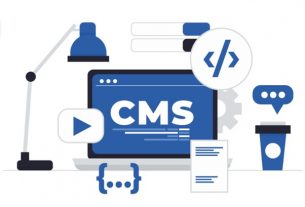The objective of digital accessibility is to ensure that all users, regardless of their situation, can access and utilize digital resources. It is essential to note that not everyone has the same requirements or applications for digital goods and services. Many people completely ignore them. When it comes to the clarity of information delivery, those with learning disabilities may have different requirements than those with visual impairments.
Possible Impacts of Technology on Society
There are a variety of reasons why ubiquitous digital access is so crucial. Consequently, individuals with disabilities may have greater access to information and enhanced computer skills. This could also make it easier for everyone to utilize digital resources. Improvements in digital accessibility are advantageous for those with a variety of limitations. As instances of disabilities, we can include blindness, limited vision, deafness, and mobility problems.
Even able-bodied individuals could gain from enhanced digital accessibility. For instance, it may make it easier for the elderly to use various sorts of technology. Those whose native tongue is not English may find it simpler to utilize digital information and services.
Creating Insightful and Useful Content
The ubiquitous availability of knowledge in digital format has resulted in numerous positive results. It could facilitate communication between businesses and a greater number of customers. The public can be contacted, even if they are unable to utilize your digital products or services. You can distinguish yourself in your sector or company by delivering exclusive services. Many individuals who were previously unable to utilize your company’s benefits will now be able to do so.
Strategies for Creating Digital Content That Is Universally Accessible
Although it may seem obvious, it is essential to bear in mind that the information you present should be as straightforward as possible. The approach is to use straightforward language devoid of jargon. This involves making your material available in numerous media, such as audio and video, for customers who prefer not to read or are unable to do so.
Utilize Visual Aides
Images and videos are excellent ways to engage the audience and make the text easier to understand. However, execution is essential for minimizing accessibility difficulties. If a text equivalent is provided, those who are unable to access visual content, such as photographs or videos, will still be able to comprehend the essential message. Check the contrast to ensure that those with vision problems can view your images and videos.
Keep Informed
The Web Content Accessibility Guidelines (WCAG) 2.0 is simply one of many laws and regulations that govern digital accessibility. There are numerous regulations and criteria, WCAG 2.0 being only one. An increasing number of nations are adopting these regulations and standards. Keeping abreast of the most recent modifications to the rules is vital for ensuring that your products and services adhere to them.
Why Digital Availability Is Important
The World Health Organization defines disability as “an umbrella term including impairments, activity constraints, and participation restrictions.” A disability can result from impairments in physical, sensory, cognitive, intellectual, or behavioral health. It is estimated that one billion people worldwide live with some sort of impairment, making it one of the most prevalent health problems in the world. Despite this, obtaining services such as education and employment can be challenging for those with disabilities. Expanding access to digital material and services is one strategy to address these challenges.
A significant aspect of this is ensuring that people with visual, auditory, cognitive, and intellectual impairments can use a website or application. If we make digital materials and services more accessible to people with impairments, we can assist them in living independently and fully participating in society.
Techniques for the Physically Challenged to Use Digital Content
Access to digital content is difficult for people with diverse disabilities. Users with visual impairments may benefit from screen reader software that reads out loud written text. For the hearing impaired, audio and video content may require captions or transcripts. People with cognitive impairments may need content presented in a simpler way. People with physical limitations may also require content that is available via alternate input modalities, such as switches or eye-gaze sensors. Creators of digital material can reach a larger audience if they adapt to the diverse demands of users.
Design Accessible to the Visually Impaired
When dealing with digital information, it is essential to keep in mind that not everyone has the same experience with the physical world. Those with limited or no visual acuity, such as the blind, rely on alternative cues to comprehend information. It is crucial to take measures when creating digital content for their usage. Every single image must include a descriptive text option, for example. Videos also require closed captioning so that the hearing impaired and deaf can understand what is being said. By adopting these steps, you can potentially increase accessibility to your digital information.
Designing for the Hard of Hearing
When creating digital content, every possible viewer’s requirements must be considered. This includes those who, for a variety of reasons, may have difficulty comprehending conventional content distribution methods. Closed captioning allows those who are deaf or hard of hearing to continue to enjoy digital entertainment.
When producing closed captions for digital content, many things must be taken into account. The captions must first and foremost be understandable. Use large font sizes and avoid fancy fonts that can be difficult on the eyes. Second, ensure that the captions and audio are synchronized. This can be accomplished by employing software that generates captions automatically or by producing captions and then transcribing the audio track manually. Ensure that you examine the captions carefully for errors.
By adhering to these guidelines, you may ensure that your digital information is accessible to everyone, regardless of their physical restrictions. Utilize technologies like closed captioning, audio description, and sign language interpretation to make your material more accessible. Incorporating comments from diverse demographics will assist you in creating digital content that is appealing to all audiences.
Designing For Individuals With Brain Injury
Numerous considerations must be made when developing digital content for those with cognitive disabilities. First and foremost, it is essential to remember that every individual is unique and requires a tailored approach. Nonetheless, there are common standards that can be applied to make data more accessible. For instance, disabled people’s services promote the use of graphics and simple words. As a result, the reader may have less difficulty comprehending the subject. In addition, it is essential to provide multiple venues for debate and criticism. Thus, the reader can interact with the content on their own terms, which increases the possibility that the content will be retained. Keeping these guidelines in mind, designers can create digital material that all consumers will find beneficial.
Please visit www.qualitylogic.com for additional information on how we can assist you in creating high-quality digital material that is also accessible.



